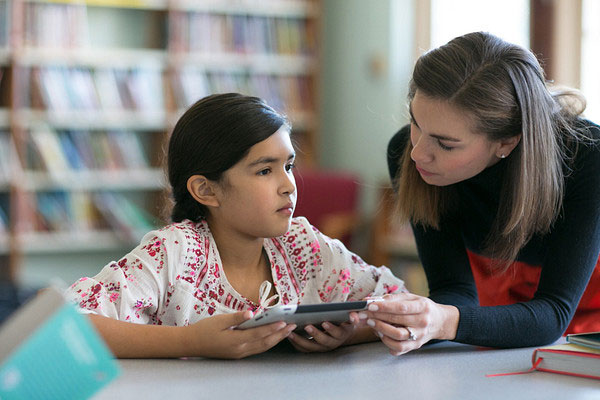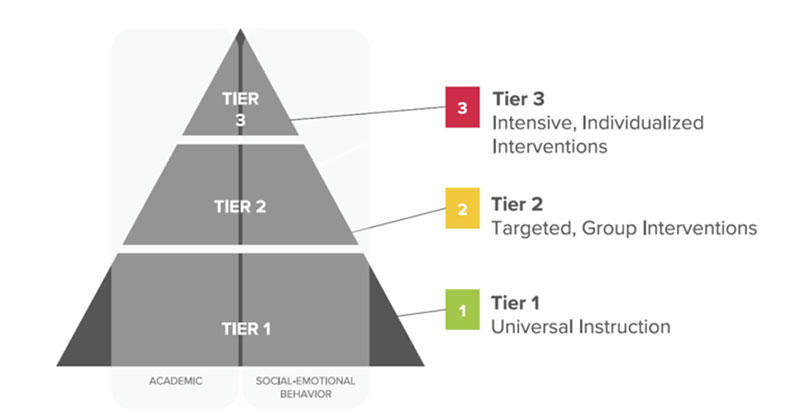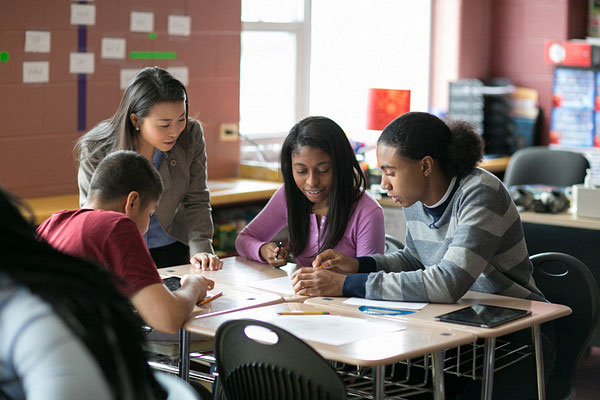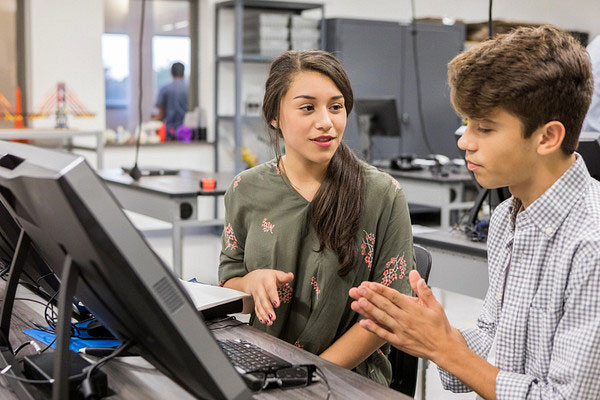November 3, 2016
As the use of a multi-tiered system of support (MTSS) has become widespread in schools, terms such as tiers, benchmarks, universal instruction, and intensive intervention have become familiar to many teachers.
These concepts may also be known by other names. For example, an MTSS might be known by terms such as Response to Intervention (RTI) or Positive Behavior Interventions and Supports (PBIS) in some districts. How are these terms intertwined?
All of these terms refer to a system of providing all students with the instruction they need at the moment they need it. Most versions of an MTSS include three tiers, or levels, of support. In this blog, I’ll discuss the unique features of each tier and answer common questions about them.

What are Tier 1, Tier 2, and Tier 3 in education?
Tier one, tier two, and tier three are terms used in education to describe different levels of intervention and support that students may need to achieve academic success. But what are the differences—and who are these different tiers meant for?
Before we discuss each tier in depth, it’s important to get a basic overview of each tier and the different terminology that may be used to describe each one.
The Center on Multi-Tiered System of Supports (MTSS Center) has a number of helpful resources. In the publication Essential Components of RTI, the overall framework is described in relation to how tiers of support are also levels of prevention. Specifically, each tier is matched to a different level of prevention as follows:
- Tier 1: Primary—efforts applied universally across all students to create optimal learning outcomes
- Tier 2: Secondary—efforts applied for selected students in a targeted manner to reduce or eliminate learning difficulties as soon as they are identified
- Tier 3: Tertiary—efforts applied in response to significant and chronic learning problems to improve student success as much as possible
The terms primary, secondary, and tertiary prevention come from the field of public health and might not be as clear or appropriate in K–12 schools and districts. For this reason, school-specific terms for these levels of support were developed:
- Tier 1 = Universal or core instruction
- Tier 2 = Targeted or strategic instruction/intervention
- Tier 3 = Intensive instruction/intervention
These three tiers are often represented in the form of a pyramid:

This leads us back to the question, what exactly is the difference between universal instruction, targeted/strategic interventions, and intensive interventions?
Let’s explore this point.
Tier 1: Core instruction
Think of Tier 1 instruction as the anchor of all tiered instruction. It is the universal tier and is provided to all students every day. During Tier 1 instruction, teachers use scientifically researched programs and evidence-based practices, curricula, and strategies that have been proven to be effective for the majority of students.
Generally, Tier 1 instruction aligns with the curriculum that each state requires. The goal of Tier 1 instruction is to provide high-quality instruction and support to all students, regardless of their learning needs or background.
When using Tier 1 instruction, educators work to create a positive and supportive learning environment that promotes:
- Academic achievement
- Social-emotional development
- Behavior management
This may include providing explicit instruction in academic content areas, using differentiated instruction to meet the needs of diverse learners, and implementing classroom management strategies that support positive behavior.
Tier 1 in MTSS also emphasizes the use of data and ongoing progress monitoring to inform instruction and identify students who may require additional support.
To sum up, Tier 1 includes the adopted curricula and related instructional methods and materials. Tier 1 is usually easy to understand, but Tiers 2 and 3 might be more confusing because they require providing specific subtypes of instruction to certain students.
Supporting student needs at every tier
Discover assessment tools from Renaissance that support data-driven MTSS.

Tier 2: Strategic instruction/intervention
The MTSS Center provides the following definition of Tier 2 (secondary) intervention:
“Secondary prevention typically involves small-group instruction that relies on evidence-based interventions that specify the instructional procedures, duration (typically 10 to 15 weeks of 20- to 40-minute sessions), and frequency (3 or 4 times per week) of instruction.
Secondary prevention has at least three distinguishing characteristics: it is evidence-based (rather than research-based); it relies entirely on adult-led small-group instruction rather than whole-class instruction; and it involves a clearly articulated, validated intervention, which should be adhered to with fidelity.”
This definition provides three distinguishing characteristics of Tier 2 intervention. It needs to be:
- Evidence-based
- Provided in small groups
- Implemented with fidelity
Additionally, the MTSS Center’s definition suggests that Tier 2 interventions are typically about 20–40 minutes in length and occur at least three to four times per week.
In other words, Tier 2 is likely to involve small groups of students with similar learning needs who work daily with a teacher using a specific instructional practice or program. Tier 2 instructional materials and methods are often similar to those used for Tier 1 core instruction.
It is important to note that Tier 2 intervention is always in addition to Tier 1 universal (core) instruction. Tier 2 needs to supplement Tier 1 because students who have not yet met learning goals need more time to learn, practice, and review knowledge and skills.
The good news is that when evidence-based Tier 2 interventions are used with fidelity, the majority of students who participate will make the improvements needed to reach grade-level learning goals. Nonetheless, not all Tier 2 interventions will be effective for all students who participate. In order to know whether a Tier 2 intervention is working, the teacher needs to conduct regular progress monitoring.
Renaissance recommends that Tier 2 progress monitoring occur at least bi-weekly. Both FastBridge and Star Assessments include valid and reliable progress monitoring tools for reading and mathematics.

Tier 3: Intensive instruction/intervention
What about the students who do not make expected progress with Tier 1 plus Tier 2? It might be tempting to assume that such students have a disability and should be referred for a special education evaluation.
However, research indicates that not all students who fail to make adequate progress with the combination of Tiers 1 and 2 have disabilities. In fact, these students often make gains when provided with instruction that is more direct, systematic, and intensive than what has been used at Tiers 1 and 2. The MTSS Center’s definition of Tier 3 intensive intervention emphasizes this point:
“Tertiary prevention, the third level of the RTI prevention framework, is the most intensive of the three levels and is individualized to target each student’s area(s) of need.
“At the tertiary level, the teacher begins with a more intensive version of the intervention program used in secondary prevention (e.g., longer sessions, smaller group size, more frequent sessions). However, the teacher does not presume it will meet the student’s needs. Instead, the teacher conducts frequent progress monitoring (i.e., at least weekly) with each student.”
Note that the MTSS Center recommends that Tier 3 materials and methods start with those used at Tier 2 but in longer, more frequent sessions with fewer students. For this reason, Tier 3 interventions typically occur five days a week. Using methods and materials that are already familiar to the student has the benefit of fostering a student’s ease of recognition and engagement.
Intensive intervention often requires a significant amount of time, and there are only so many minutes in each school day. When Tier 3 intervention involves replacing Tier 1 and Tier 2 methods and materials, this is often referred to as a “replacement core” program.
If a replacement core program is considered, it is essential that the school contact the student’s parents or guardians and obtain permission for the student to participate in alternate instruction.
With parental approval in place, the school can then arrange a schedule for the Tier 3 intensive intervention. Often, Tier 3 intervention is provided during the same block of time as Tier 1 core instruction, as well as the additional time for Tier 2 intervention.
Tier 3 intervention is substantially more intensive and might require additional staff and material resources. For this reason, it should be reserved for those few students whose progress monitoring data indicate that prior intervention has not been successful.

How should teachers use MTSS (and tiered supports) with their students?
An MTSS offers teachers an organized way to support the learning needs of all their students.
Tiered supports are provided along a continuum of teaching methods and materials, with Tier 1 serving as the foundation for all students. For students who do not meet learning goals with Tier 1 alone, adding Tier 2 strategic intervention often leads to success.
Nonetheless, a very small number of students will need more intensive intervention in order to meet their learning goals. Tiers 2 and 3 differ in regard to the length and duration of lessons, as well as how many students participate in a group. With multiple tiers of instruction available, schools can successfully meet the learning needs of most students.
Renaissance: Providing tools to support Tier 1, Tier 2, and Tier 3
Renaissance screening and progress monitoring assessments provide you with the essential data needed for your MTSS, giving you visibility into the needs of each student at each tier.
By deeply understanding whole child needs and aligning targeted interventions with Tier 1, Tier 2, and Tier 3 instruction, you can provide targeted and effective interventions to support each learner.
Learn more
We also offer eduCLIMBER, a unique MTSS collaboration and management platform for analyzing whole child data. Connect with an expert today to learn more.

